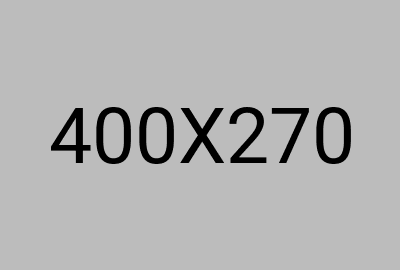Overview of Substation Design Course
The Substation Design Course at MEP Abu Dhabi is specifically designed for electrical engineers and professionals who wish to excel in power system design and operation. With a focus on practical application, this course provides in-depth knowledge of substation layout, equipment selection, protection systems, and safety considerations.
Our expert trainers guide you through key topics like electrical substation design training, advanced protection techniques, and hands-on use of design tools. From high-voltage substations to distribution stations, participants gain a complete understanding of the design and operational challenges.
Key Features of the Course
- Comprehensive Training: Electrical substation design course topics.
- Real-world Case Studies: Hands-on learning with practical examples.
- Industry Expert Guidance: From trainers with years of experience.
- Access to Latest Tools: And software for substation design.
Substation Design Course Syllabus
The Importance of Electrical Substation Design Course Certification in Abu Dhabi
In Abu Dhabi, rapid urbanization and industrial growth have increased the demand for robust power infrastructure. Electrical Substation Design Course certification equips professionals with the skills needed to design and maintain these critical systems.
Why Certification Matters
- Validates Expertise: In substation design.
- Enhances Career Prospects: In power and utility industries.
- Aligns with Industry Standards: And best practices.
- Employer Preference: Certified professionals ensure system reliability and safety.
Why Learn Electrical Substation Design?
Top Reasons to Pursue Substation Design Training
- High Demand: Abu Dhabi's expanding power sector creates numerous opportunities.
- Skill Enhancement: Gain practical skills in advanced substation design and safety.
- Career Advancement: Open doors to senior roles in electrical engineering.
Key Benefits
- Master Design Principles: And protection schemes.
- Work Confidently: With advanced substation design tools.
- Contribute to Sustainability: And efficient energy solutions.
Demand for Skilled Electrical Substation Design Professionals in the Electrical Industry
The electrical industry is evolving with new technologies and increasing energy demands. Skilled professionals in electrical substation design training are critical for ensuring efficient power distribution and system reliability.
Key Sectors Hiring Substation Design Experts
- Power Generation: And distribution companies.
- Construction: And infrastructure firms.
- Renewable Energy Projects: Across industries.
Industry Benefits
- Reduced Downtime: Through robust designs.
- Increased Efficiency: And system safety.
- Adherence to Standards: In power systems.
Substation Design Training Outcome
Upon Completion, You Will Gain:
Key Skills Gained
> Proficiency in substation design principles.
> Knowledge of industry-leading software tools like AutoCAD.
Software Proficiency
> Expertise in using AutoCAD for substation design.
> Ability to integrate design elements effectively within substation systems.
Career Advancements
> Enhanced career opportunities in the electrical and utility sectors.
> Potential to work in high-demand roles like Electrical Engineer or Substation Designer.
Who Can Enroll in Electrical Substation Design Training Certification Classes?
This course is ideal for:
- Electrical Engineers: And technicians.
- Power System Professionals: In design and maintenance.
- Engineering Students: Aiming to specialize in substation design.
Career Advantage After Completing Electrical Substation Training in Abu Dhabi
Completing the substation design course opens up significant opportunities:
- Work on Major Projects: Contribute to critical power systems for industries, utilities, and commercial sectors.
- Path to Senior Roles: Fast-track career progression to leadership positions in the electrical industry.
- Enhanced Earning Potential: Niche knowledge makes you a valuable asset, boosting salary prospects.
- Future-Ready Expertise: Stay ahead with skills in renewable energy integration and smart grid development.
Why Choose Us?
At MEP Abu Dhabi, we provide:
- Expert Trainers: Learn from industry veterans with years of practical experience.
- Comprehensive Curriculum: Covers all essential aspects of substation design.
- Practical Learning: Hands-on training with real-world applications.
- Flexible Options: Classroom and online training available.
Available Training Options
- Classroom Training: Interactive sessions at our state-of-the-art facility.
- Live Virtual Training: Flexible online sessions tailored for global participants.
How to Get Substation Design Course Certification

Step 1: Enroll in the substation design training program.
Step 2: Complete the coursework and practical sessions.
Step 3: Pass the assessment to earn your certification.
Faq
The training covers the design and operation of substations, including layout planning, equipment selection (transformers, breakers, and switchgear), grounding systems, and protection schemes. It prepares professionals to design reliable substations for power transmission and distribution.
Yes, the course emphasizes safety measures such as grounding, insulation, and fire prevention systems. Participants also learn about electrical hazard mitigation, ensuring personnel and equipment safety in substations.
Participants are trained in industry-standard tools like ETAP, AutoCAD Electrical, and MATLAB to simulate, analyze, and document substation designs. These tools enable precise design and troubleshooting of substation projects.
The course includes transformers, circuit breakers, busbars, disconnect switches, protection relays, and lightning arrestors. Participants gain knowledge about component selection and integration for efficient and reliable substation operation.
Yes, grounding system design is a core module. Participants learn to design grounding grids that protect equipment and personnel, ensuring safe fault current dissipation and compliance with standards like IEEE 80.
Graduates can work on designing substations for utilities, industries, and renewable energy plants. Examples include urban power distribution substations or wind farm substations designed for efficient energy integration.
Yes, participants learn to perform power flow and short-circuit studies to optimize substation performance. This ensures system reliability and effective protection during abnormal operating conditions.
The course covers IEEE, IEC, and ANSI standards, ensuring participants are prepared for global substation design practices and regulatory compliance.
Yes, the training includes substation automation systems (SAS) using SCADA. Participants learn about remote monitoring and control, enhancing the efficiency and safety of substation operations.
Absolutely. The course teaches how to design substations for renewable energy projects like solar and wind farms, focusing on transformer selection, power evacuation, and grid integration.
Through practical sessions, site case studies, and simulations, participants learn to address challenges like space constraints, environmental conditions, and equipment maintenance in real-world substation projects.
Protection systems are vital to prevent faults and equipment damage. The course includes protection relay settings, fault isolation mechanisms, and coordination to ensure substation safety and reliability.
Yes, participants learn to design energy-efficient substations by optimizing transformer losses, power factor correction, and load balancing, reducing operational costs and energy wastage.
Professionals can pursue roles as Substation Designers, Protection Engineers, or Project Managers in utilities, EPC companies, and renewable energy sectors, with excellent career growth potential.
Yes, the course addresses environmental factors like oil containment systems, noise reduction, and emissions control to ensure substations meet regulatory and sustainability goals.
Hands-on training is a critical part of the course. Participants work on real-world design projects, including creating substation layouts, selecting components, and simulating performance.
The course covers load flow, short-circuit analysis, voltage drop, and thermal calculations to optimize substation design and ensure system efficiency and safety.
Substation layout design ensures proper equipment arrangement, accessibility, and safety. The course teaches how to create optimal layouts for air-insulated and gas-insulated substations.
Yes, participants explore advanced technologies like gas-insulated substations (GIS), digital substations, and renewable energy grid integration, ensuring future-ready expertise.
By mastering the principles of substation design, protection, and automation, participants gain valuable skills that enhance their credentials, making them highly sought-after in power and energy industries.
Book Your Seat Now!
Our New Batch Starts On Every Week In a Month





